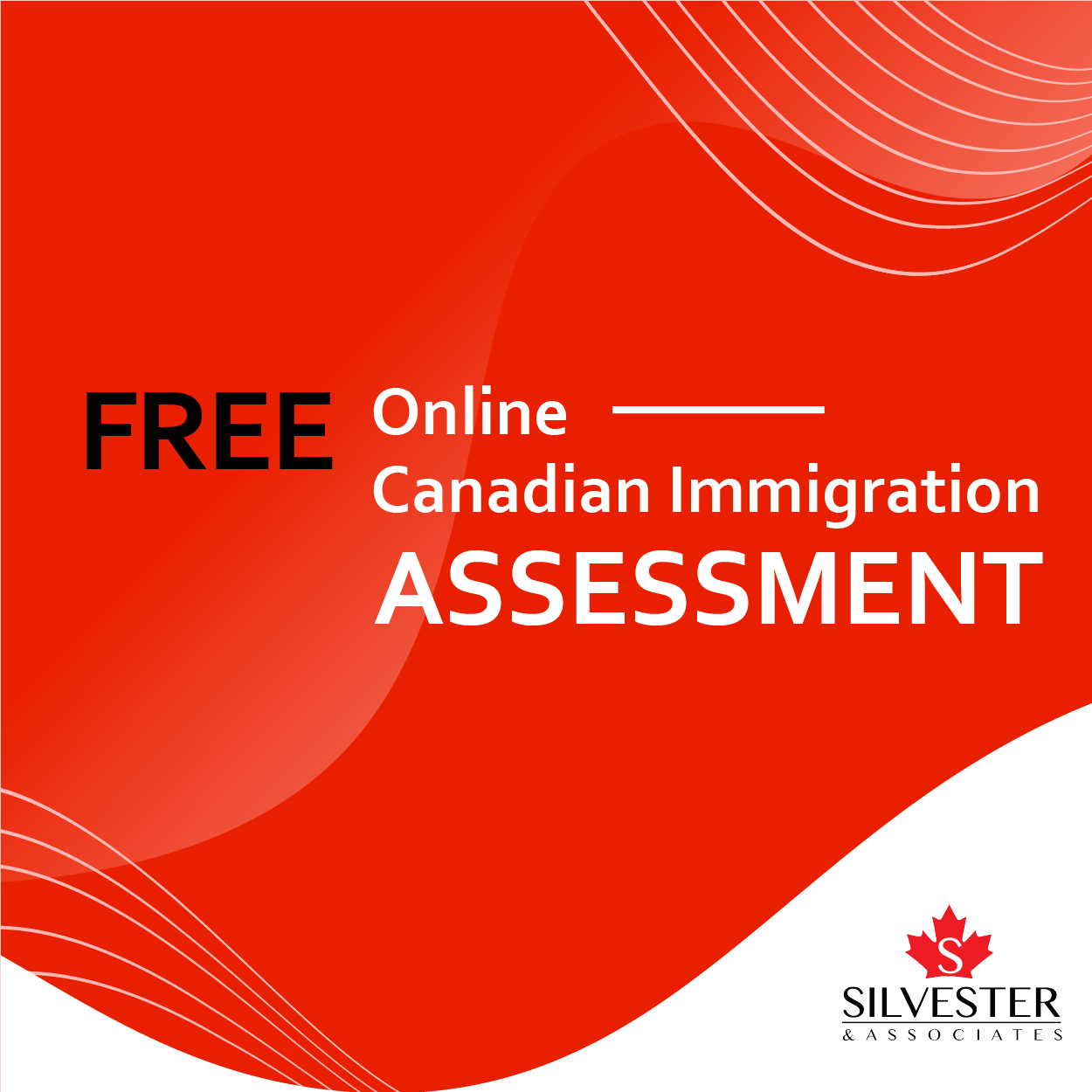Are you new to Canada and looking for a job offer to secure a comfortable life for you and your family? Or you need a job offer letter for your Canadian immigration? This article shares you the steps to follow to make the most of your Canadian job search.
- 1. Prepare a professional resume
- 2. Prepare a Cover letter for a job offer in Canada
- 2.1 List your contact information (and the employer’s details)
- 2.2 Address the hiring manager (ideally by their name)
- 2.3 Write an attention-getting opening paragraph
- 2.4 Explain why you’re qualified for the job
- 2.5 Relate your experience to the company’s needs
- 2.6 Finish with a concise closing paragraph
- 3. Build a LinkedIn Profile
- 4. Participate in conversations
- 5. Post content
- 6. Networking
- 7. Agencies
- 8. Canvassing Employers
- Conlusion

Are you planning to come to Canada as an immigrant? Finding a suitable job offer for your experience and passion should be one of your priorities. The pandemic has made job seeking more challenging; therefore, it is important that you need to stay up to date on what is happening in the Canadian labor market, so you are prepared for your future career.
The following useful tips will help you discover how to get a job offer in Canada.
1. Prepare a professional resume

1.1 What is a resume
A resume is a formal document that provides an overview of your professional qualifications, including your relevant work experience, skills, education, and notable accomplishments. Usually paired with a cover letter, a resume helps you demonstrate your abilities and convince employers you’re qualified and hirable.
If you’re applying for a job, you need at least a resume to be considered for the position.
On a base level, a resume is made up of the following five parts:
- Contact details
- Introduction
- Educational background
- Work history
- Relevant skills
The goal of your resume is to convince employers you’re worth interviewing. To that end, your resume is a valuable tool you can use to highlight your experience to prospective employers.
If your resume provides a concise summary of your relevant qualifications and skills in a format that makes your ability to handle the work as clear as possible, you may get more interviews.
Employers not only use resumes to find a good fit, but they also use them to weed through the applicants. At this point in the hiring process employers are handling numerous resumes and they are looking for mistakes to narrow the applicant pool. From the resume, the employer will decide who they will and will not interview.
Remember your resume should reflect you. Although, certain standard elements are included in all resumes, there is no perfect resume mold that you must ascribe to. Your resume should accurately reflect your background and experience in a way that optimizes your qualifications. One way to maximize the impact of your resume is to choose a style that will make your personal history as attractive as possible.
1. 2 How to prepare a professional resume
There are three basic formats, and each determines how your resume is organized based on your years of experience and what you want to highlight. They’re not interchangeable, so choose the one that will benefit you the most before writing a resume.
- The chronological resume format:
is the most used format. It’s perfect for people with a lot of professional work experience, no employment gaps, and job seekers applying to a job that puts a heavy importance on experience, because it emphasizes work history, focusing on your top achievements and career progression.
- The functional resume format:
is excellent for first-time job seekers, candidates looking to write a resume with no work experience, people changing careers, or those with employment gaps. It highlights your skills and training, focusing on the abilities that can make you a great addition to the team.
- Also known as the hybrid resume, the combination resume format combines the functional and chronological resumes. It’s ideal for mid-level candidates with some experience in their industry, job seekers switching to a different industry with transferable skills and people re-entering the workforce.
What you should put on your resume depends on the job you’re applying for and your relevant professional background.

At a minimum, your resume should include the following sections:
Contact details: include your first and last name, phone number, and email address. Additionally, you can add your LinkedIn profile if yours is up to date, and your mailing address if you want to prove you live near the place you’re applying.
Introduction: a concise overview of your professional background and key qualifications. Your introduction can be in the form of a resume summary, professional profile, resume objective, or qualifications summary.
Education: Include your school names, highest degree earned, majors and minors. Additionally, you can add your GPA and relevant coursework if you lack experience, or it’s related to the position.
Experience: list any relevant work experience you have. Include your title, the company you worked for, years worked, and a bulleted list of your key responsibilities and notable successes. Be sure to also include as many relevant accomplishments on your resume as possible.
Skills: include any resume skills you possess that are relevant to the position. Be sure to use a strong mix of hard skills and soft skills to demonstrate that you’re a well-rounded candidate.
Essentially, your resume is an advertisement to prospective employers. It should set you apart from other candidates in the job market and sell the employer on your strongest qualifications.
2. Prepare a Cover letter for a job offer in Canada

A cover letter is a one-page document that you submit with your resume to express your interest in a job opening. The purpose of a cover letter is to introduce yourself to an employer and provide a brief overview of your work history, professional skills, and an explanation why you’re the best fit for that job.
While your resume focuses on your qualifications and achievements, your cover letter expands on those achievements, showcases your personality, and explains why you’d be a good fit for the company.
2.1 List your contact information (and the employer’s details)
Underneath your name in your cover letter header, list the following contact details:
- First and last name
- Email address (something professional, usually including your name)
- Phone number
- Mailing address (optional)
- LinkedIn profile link (optional)
- Portfolio or website (optional)
After your header, include the date and following company contact information:
- First and last name of the person you’re writing to, or the relevant department
- Company address
- Company phone number
- Hiring manager’s email address
2.2 Address the hiring manager (ideally by their name)
Next, address your cover letter to the hiring manager by name if possible. A standard cover letter salutation includes the hiring manager’s first and last name, and begins with a “Mr.”, “Ms.”, or another relevant professional title.
2.3 Write an attention-getting opening paragraph
Start your cover letter with an informative, direct introduction by including the following details in the first one or two sentences:
a. Job position: The title of the advertised position
b. Company name: The name of the company you’re applying to
c. How you discovered the opening: Whether you saw the job on LinkedIn, a job board, or were recommended to apply by a friend
d. Intention to apply: An enthusiastic announcement that you’re applying for the open role and why you’re interested in or qualified for it
e. Notable accomplishments: If you have relevant work experience, highlight one or two of your most notable achievements in your introduction to immediately grab the employer’s attention
2.4 Explain why you’re qualified for the job

Your second and third paragraphs should make a convincing argument you’re the right person for the job by discussing your relevant work experience, skills, and achievements.
Here are some things to include in your cover letter that highlight your value to an employer:
- Professional achievements: Did you exceed targets for production, sales, revenue, profit, customer satisfaction, or any other business objectives?
- Professional praise: Have you received compliments from management or colleagues for your work?
- Professional awards: Have you received awards for your work, like “Employee of the Month”?
2.5 Relate your experience to the company’s needs
Begin to close out your cover letter by restating your interest in the job and explaining how your experience fits into the needs of the company.
For example, if you’re applying to work at a company that’s seeking to break into a new market that you have experience in, you should highlight this experience in your writing.
If you’re not sure what the goals or needs of the company are, find out by doing some general research online. Take note of what products or services they offer, what their work culture is like, or if they have any future goals.
2.6 Finish with a concise closing paragraph
When writing your cover letter closing, be polite, confident, and continue to market yourself as the best candidate for the job. Here’s how to write a convincing final paragraph for your cover letter in three steps:
a. Restate your excitement about the job opportunity
b. Politely ask the reader to send you an invitation to interview
c. Thank the hiring manager for reviewing your application
The purpose of a cover letter is to capture your future employer’s attention. It also helps you to express your interest in the job. The cover letter you write should always motivate readers to want to know more about you. It should let recruiters know of what you are able to do.
3. Build a LinkedIn Profile

LinkedIn is the world’s largest professional network on the internet. You can use LinkedIn to find the right job offer in Canada, connect and strengthen professional relationships, and learn the skills you need to succeed in your career. You can access LinkedIn from a desktop, LinkedIn mobile app, mobile web experience, or the LinkedIn Lite Android mobile app.
A complete LinkedIn profile can help you connect with opportunities by showcasing your unique professional story through experience, skills, and education.
You can also use LinkedIn to organize offline events, join groups, write articles, post photos and videos, and more.
LinkedIn is an online platform that connects the world’s professionals. Here are a few steps to get started on LinkedIn:
3.1 Create your profile
Signing up and creating your profile is the best way to begin using LinkedIn. A complete LinkedIn profile will summarize your professional experience to your connections, current and future employers, and recruiters. Through your profile, you can showcase your professional life, milestones, skills, and interests.
3.2 Build your network
Your network plays a crucial part in unlocking the power of LinkedIn. It’ll help you understand what is happening in your industry and professional circle. You can begin by adding your family, friends, past or current classmates, and coworkers to your network. You can also follow people, companies, or topics by navigating directly to the Follow fresh perspectives page, which displays recommended sources to follow. You can use the LinkedIn Events feature to create and join professional Events such as online workshops, seminars, sales and marketing Events, networking Events and more.
3.3 Find a job
If you’re looking for a new professional opportunity, you can get started on your job search on LinkedIn. You can use LinkedIn to research companies and reach out to the hiring community. You can also apply directly for roles, save job searches, and notify your connections and recruiters that you’re open for job opportunities.
4. Participate in conversations

You can easily participate in conversations on LinkedIn. Participating in conversations can allow you to share your perspective on relevant issues and topics with others. You can like and comment on posts and articles on LinkedIn. You can create or join LinkedIn Groups to connect and grow with members who share your interests, experiences, or aspirations. You can also use a set of lightweight expressions called LinkedIn reactions, to easily communicate with your network.
5. Post content
Millions of members come to LinkedIn every day to connect, learn, and share. You can empower and educate your professional circle with the content you post on LinkedIn. You can also share your thoughts and ideas with LinkedIn members using the share box.
Popular websites to find a job in Canada

Online recruitment websites allow you to search according to your criteria, such as sector, salary, and region. You can also post your resume on websites so that companies looking for specific skills can find you.
Now’s a great time to look for a new job. Candidates have the upper hand as the country’s labour shortage continues.
To make finding your perfect match easier – and quicker – we reviewed three of the best Canadian job search websites:
5.1 Government of Canada – Job Bank
Job Bank is Canada’s national employment service, available as a website and mobile app. This website helps Canadians find work and plan their careers and make it easier for employers to recruit and hire across the country. The ‘Employment Groups’ filter helps specific groups such as seniors, students, veterans, disabled people, and Indigenous peoples find great jobs.
5.2 Job Spider
Job Spider is a free employment information exchange job board. The website is FREE to employers and jobseekers. There is no charge to post a resume, post job(s), search through the resumes, search through the jobs, or create a job alert.
5.3 Career Owl
Career Owl is a non-profit, independent service that started in 1999 as a volunteer project of Canadian university families to help Canadian employers connect with the talent that their tax dollars helped to train. Workers and employers can use Career Owl’s job search. Career Owl supports both local area and nationwide search at no charge.
6. Networking

Career networking involves using personal, professional, academic, or familial contacts to assist with a job search, achieve career goals, learn more about your field, or another field you’d like to work in. Networking can be a good way to hear about job opportunities or get in at a company you’d like to work with.
Networking can help you get hired and grow your career. LinkedIn reports:
80% of professionals consider professional networking to be important to career success.
35% of surveyed professional say that a casual conversation on LinkedIn Messaging has led to a new opportunity.
61% of professionals agree that regular online interaction with their professional network can lead the way into possible job opportunities.
7. Agencies

The most effective way to hire the best staff is to use a great recruitment agency. In Canada, job boards, LinkedIn, and national media are good ways to find a broad range of potential employees, but to hire the best talent you will need the help of a recruiter. Over 70% of jobseekers have applied for job offers they aren’t qualified to do. Amongst other benefits, using a recruitment agency filters out these candidates, who simply don’t have the right skills for the job.
8. Canvassing Employers
You can always cold-call or cold-email employers who might be interested in hiring someone with your skills. Or you can look on employers’ websites for job postings as some employers see value in people who take initiative. If you are a great candidate, the employer may not care that you are overseas.
Conlusion
Now that you have a good idea of how to get a job offer from Canada, it’s time to get started in the application process. Once you’ve received your offer, the next step is to apply for whatever visa you need to live and work in Canada. To help with this process, speak with an accredited immigration consultant who can help you with every step of the process.

